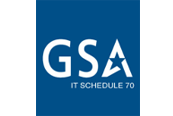Are your technical documents overly complex? Or perhaps, your technical documents are consistently plagued with content and grammatical errors? Is there room to streamline your technical documentation process? If you’ve answered “yes” to any of these questions, then check out the WhirlWind Technologies Documentation Team’s top ten tips for more effective technical documents:
- Research, Research and More Research!: A disjointed, ineffective and unpolished technical document is almost guaranteed when you have no clue what you’re talking about. Therefore, read all of the provided subject material and any relevant information resourced from the Internet, databases, etc. Researching your subject material tells you what to include and what can be left out of your document, and provides vital information to identify gaps.
- Create Repeatable Processes: A streamlined, repeatable technical documentation process will yield better time management, reduce workload redundancy and alleviate any confusion among team members regarding roles and responsibilities. A standard, repeatable process should include researching, drafting, reviewing and final editing phases. Suggested roles in the technical documentation process include the lead writer, QA specialist and final reviewer.
- Collaborate with Technical Leads/SMEs: These are the individuals who know the “ins-and-outs” of the subject material; therefore, they are essential in the technical documentation process. During the research and writing phase, the lead writer and other contributors should consult with the Technical Leads/SMEs to gain clarity on subject material, ensure content accuracy and resolve any additional questions or concerns. Remember that they also have a vested interest in making sure your documentation is technically sound and effective.
- Create Checklists (Consistency lists, Quality Assurance (QA) checklist, etc.): Technical documentation differs from creative writing in that repetition is favored over imaginative text. For example, “WhirlWind Technologies” should always be written as “WhirlWind Technologies” and not “business,” “contractor,” “company,” etc. in a technical document. The repetition may seem redundant, but it will alleviate confusion to end users. For a polished technical document, maintain a consistency list that defines acronyms, specific terminologies, etc. and how they should appear in your technical document and all related documents. A QA checklist that addresses what to look for during the review phase will also ensure a polished and cohesive technical document.
- Collaborate to Draft Document: The lead writer should prepare the initial draft of your technical document. Reviewers and SMEs should provide input and raise questions to avoid major content overhaul during the latter phases of the technical documentation process. It is necessary to appoint someone to lead, approve and disapprove changes to ensure a cohesive document. Consider having the lead writer also lead collaborative efforts.
- Ensure That Your Document Has One, Cohesive Voice: Oftentimes, there are many people (e.g., business analysts, SMEs, other writers, stakeholders, etc.) involved in reviewing your technical document who have different writing styles. While their input is invaluable, your technical document should not read as if there were multiple authors because it can be distracting and appear unpolished to the end user. Acronyms, spelling and/or grammar inconsistencies in concentrated areas, and overly verbose sections are clear giveaways of multiple authors. The lead writer, while involved in almost every phase of the technical documentation process, should also ensure that your technical document reads as if it were written by one author, with one voice.
- Review, Review and More Review: This is pretty self-explanatory. Remember that your reputation hinges on the quality of your output. Glaring content and formatting errors may negatively affect future business opportunities.
- Separate Content Review from Formatting/Grammatical Review: It can be overwhelming to perform a content and formatting/grammatical review simultaneously, and important errors often fall through the cracks. Review content first, since substantial document changes may also impact scheduling and submission deadlines. Review the document’s formatting/grammar last, since these errors are generally easy fixes.
- Did We Say More Review?: By now, you can probably recite your technical document from memory. Take a break, or work on another project, and then return to your document with “fresh eyes.” Review once more for overlooked errors and resolve remaining document issues.
- Conduct a Lessons Learned Survey at the End of Major Projects: Solicit and incorporate feedback from the client, SMEs, writers and reviewers to improve and streamline internal process. Remember that there is always room for growth.







